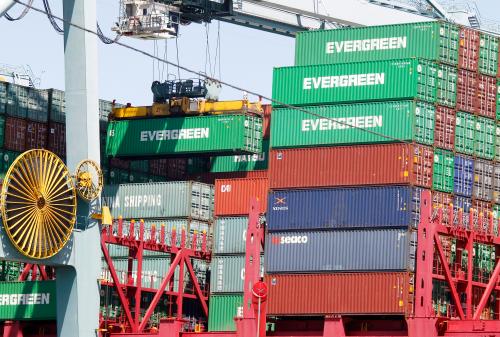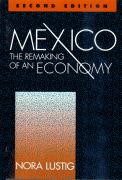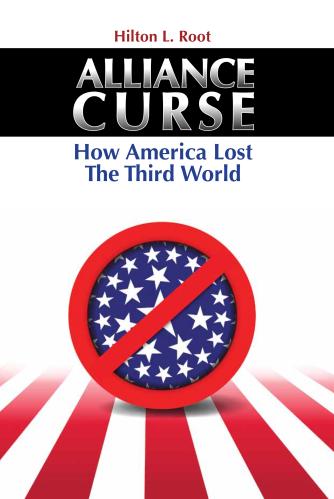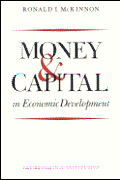A dilemma surrounds global trade and investment efforts in metro areas. Economic development leaders are increasingly convinced that global engagement matters, but they are equally (and justifiably) convinced that they should use data to better determine which programs generate the highest return on investment. Therein lies the problem: there is a lack of data suitable for measuring export and foreign direct investment (FDI) activity in metro areas. Economic theory and company input validate the tactics that metros are implementing – such as developing export capacity of mid-sized firms, or strategically responding to foreign mergers and acquisitions – but they barely impact the data typically used to evaluate economic development success.
How, then, can new approaches to exports and FDI make it into mainstream economic development practice? It’s an uphill battle, but a few places are making progress. Even though these metrics are imperfect and, in some cases, laboriously handcrafted, at the very least they represent successful stopgap measures for assessing impact until better solutions emerge.
States, which have been in the export game longer than metros, offer some of the best examples. Take Virginia (where we recently completed a study commissioned by the Virginia Chamber of Commerce Foundation), which passed a bill to increase its international trade budget by 20 percent and move its international trade division from the state’s main EDO to a new entity. This was possible because Virginia’s international trade division assiduously collects data from companies participating in its flagship initiative, VALET, an export accelerator for high potential mid-sized firms. The structure of the program makes calculation of reasonably accurate performance metrics possible. Participating companies have to apply, which provides the state with good baseline data for participating firms. And it is a two-year process, long enough that participating firms usually have measurable successes while in the program. The result is convincing statistics, such as the fact that companies experience a 54 percent increase in export sales while in VALET.
At the city level, the Portland Development Commission (PDC) has followed a similar approach with its We Build Green Cities strategy in Japan. PDC has worked with the same, relatively small group of firms for several years. Its employees are intimately involved in the process of connecting firms to projects in Japan, so they are able to track the value of the contracts that PDC has directly facilitated. (The number far exceeds the city’s investment in the program.) Success brings challenges; however, as firms become more capable of landing their own contracts – the very point of the program – they become less reliant on PDC staff and thus impact becomes harder to measure.
Neither example is perfect. Both programs likely attract firms that were already better positioned to export than the average firm. As Tim Bartik has written, these “selection biases” are a major impediment to accurately measuring economic development impact. To truly isolate their impact, economic development organizations would have to track a statistically similar group of firms that didn’t receive export assistance and compare the outcomes. To partially account for this gap, Virginia produces qualitative case studies that detail how its assistance contributed to firms’ global success.
Some regions simply avoid traditional metrics altogether, in recognition of the fact (as noted in our previous blog post) that exports can increase a firm’s competitiveness without having a clear impact on outward measures like jobs and capital investment. Many leading export programs in U.S. states (Florida, New York, Pennsylvania, Virginia, and Washington) as well as foreign countries (Australia, Canada, Germany, and the U.K.) don’t track jobs or capital investment in their evaluations of trade success. These leading U.S. states all try to gather export sales figures on a voluntary basis, but because of low response rates they mostly rely on measures of customer satisfaction and company success stories (as do most foreign governments).
Of course, these company export success stories hold more weight when paired with evidence on how their success matters in a broader context. While Virginia doesn’t directly track jobs created through its VALET program, it has produced research showing that 1 percent of firms accounted for 60 percent of the state’s job growth over a five year period. On average, these firms grew from 12 to 31 employees each – meaning that many of them match the profile of the mid-sized firms that VALET serves. Similarly, in Portland, a “Value of Jobs” coalition study showed that the region’s traded sector workers make 42 percent more than the average worker in a local serving industry.
In short, the most successful regions take a multi-pronged approach to measure what they can and, in the absence of data, otherwise rely on case studies supported by rigorous analysis. But these approaches still capture neither medium-term impact that regions hope to achieve, such as growth in export volume or foreign investment, nor long-term outcomes, such as per capita income growth.
The Brookings Institution is committed to quality, independence, and impact.
We are supported by a diverse array of funders. In line with our values and policies, each Brookings publication represents the sole views of its author(s).











Commentary
Measuring state and metro global trade and investment strategies in the absence of data
June 13, 2016